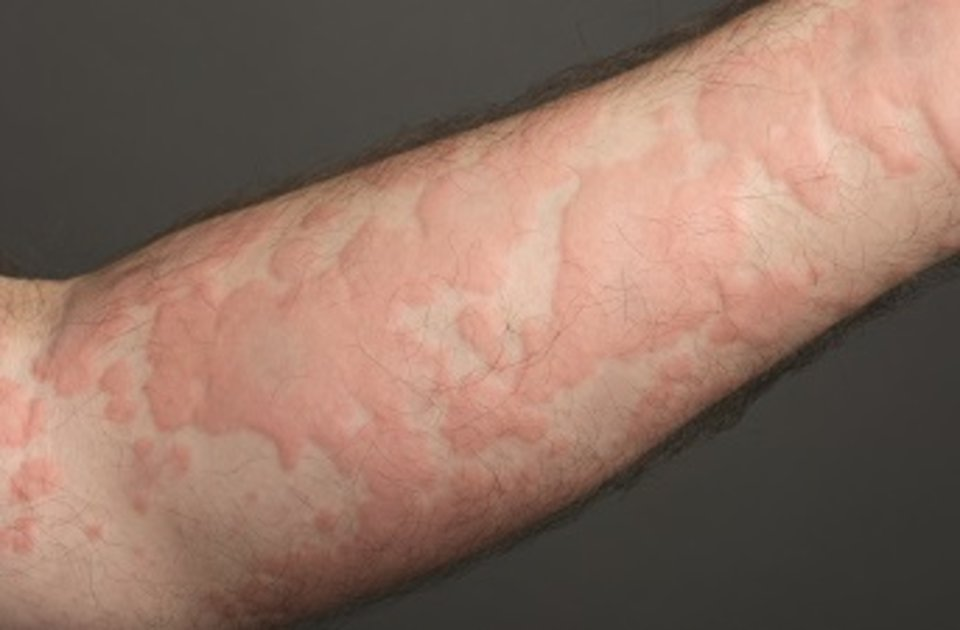Pigmentary Disorders
What determines our skin colour?
Our skin colour is determined primarily by melanin, the pigment which is produced by the pigment cells called melanocytes. Melanocytes are found at the junction between the top and bottom segments of the skin. The quantity and quality of melanin will determine the skin colour and these are determined to a large extent by the genetic make-up of an individual. For example, melanin is found in abundance in an Indian while it is found in lesser quantities in a Chinese. Besides genetic factors, various physiological and disease processes may also modify melanin production and therefore alter the skin colour. For example, the pigment cells are stimulated when a person is exposed to sunlight resulting in increased production of melanin pigment thereby giving rise to a suntan. The common disorders of skin colour are mentioned in the subsequent paragraphs.
The blood vessels within the skin may also contribute to skin colour of an individual, accounting for the reddish hue in the skin. Therefore, if an area of skin has abundant blood vessels, the area will appear pinkish or flushed. There are certain skin conditions which involve the blood vessels and therefore resulting in a change in skin colour.
What are melasma, lentigenes, freckles and post-inflammatory hyperpigmentation?
These are conditions in which the pigment cells in the skin are overactive or increased in number.
Melasma (also called chloasma)
This is a condition commonly found among Asian women. These women have dark patches on their cheeks, over the nose bridge and forehead. Some women may first experience this problem after consumption of family planning pills while others develop it during pregnancy. This type of pigmentation may also be brought on by sun exposure, and is worsened by it. Very occasionally, melasma is seen among males.
Treatment for melasma includes:
- Elimination of aggravating factors (e.g. contraceptive pills)
- Sun avoidance, stringent sun protection (by using an umbrella, wearing a hat and consistent use of a good sunscreen)
- Appropriate use of various creams including hydroquinone (a skin-lightening agent), vitamin A-related creams (such as tretinoin) and fruit acids (such as alpha-hydroxy acid). However, some of these creams can be irritating to the skin and you should consult your doctor before using them.
For severe cases of melasma, chemical peeling using various acid preparations may be useful too, or your doctor may consider starting you on oral medication.
Solar lentigines (also called liver spots)
These appear as discrete, usually oval brownish spots on the cheeks. Lentigines are a sign of skin damage by the sun’s rays and brought on and made worse by sun exposure. They have nothing to do with liver diseases. Besides sun protection and sun avoidance, use of various lightening creams and laser therapy (pigment lasers) may also help resistant cases.
Freckles
Freckles occur where pigment cells in the skin produce too much melanin in response to sunlight. There is usually a genetic tendency to developing freckles. Freckles appear as regularly spaced brownish spots on sun-exposed parts and are smaller than lentigines. The most important form of treatment is sun protection and sun avoidance. Treatment by intense pulse light and pigment lasers can clear the freckles. However, they tend to recur after subsequent re-exposure to sunlight.
Post-inflammatory hyperpigmentation
This refers to the darkening of skin after an episode of skin inflammation. Inflammation of the skin may take place whenever the skin has been damaged, such as insect bite reactions, eczema (dermatitis), infection, injury or even surgery. There is considerable variation in an individual’s tendency to post-inflammatory hyperpigmentation. Fortunately, this form of darkening of skin usually resolves with time and the various lightening creams may help to speed up the lightening process.
What are some of the common skin conditions resulting in LIGHTENING of skin?
Pityriasis alba
This is a common problem among children. Very often, these children may have sensitive skin rash (atopic eczema), hay fever or even asthma. The rash appears as whitish patches on the face, less commonly on the limbs and body. The patches usually become more obvious after sun-exposure and may become red and scaly. Treatment for this condition can be a challenge as the patches tend to persist despite treatment with creams. However, it does improve over many months with sun avoidance, topical immunodulators (such as pimecrolimus) or low potency topical steroids and use of moisturizers.
Vitiligo
This is a condition resulting from disappearance of pigment cells within the skin. The exact cause of this condition is not fully understood, but autoimmunity and genetic factors play an important role. The extent of vitiligo is variable and may be localized or extensive. It usually affects the hands, feet and central part of the face, but may occur on any part of the body. The affected areas of the skin appear white and may get sun-burnt easily due to the lack of protection by pigment cells. Vitiligo can be worsened by injuries to the skin, with the injured area turning white.
The treatment of vitiligo depends on the severity of the condition:
- Limited areas can be treated with topical medications including topical steroids, immunomodulators, and vitamin-D derived compounds, as well as with focal ultraviolet light (“targeted phototherapy”).
- Patients with more extensive areas may benefit from full-body ultraviolet light therapy (narrow-band ultra-violet B), in addition to topical medication. In phototherapy, the skin is exposed to controlled amounts of ultraviolet radiation from an artificial light source. This stimulates the remaining pigment cells to produce melanin and the appearance of new pigment cells from the stem cell pools, bringing about the eventual recovery of skin colour.
- Surgery is sometimes carried out to treat vitiligo that fail to respond to the above-mentioned treatments. This can be carried out by grafting normal skin to the depigmented areas, or by transplanting pigment cells derived from the same individual.
Post-inflammatory hypopigmentation
Although inflammation of the skin may cause darkening of skin, the same process may result in lightening of skin if the inflammatory process damages the pigment. Fortunately, the lightened areas usually improve on their own after a period of time.









